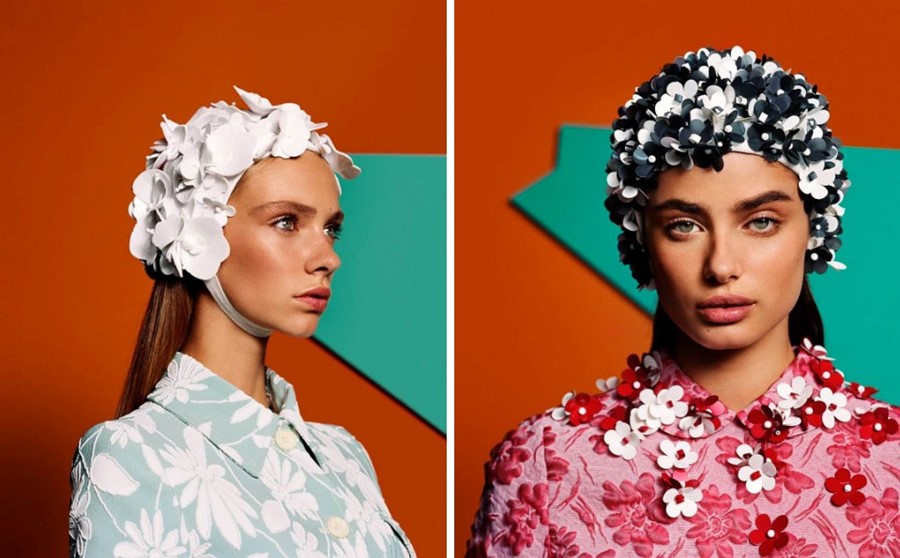From its chlorine-soaked origins as a 1920s perm protector to an influence upon Miuccia Prada’s design, we trace the history of an unconventional fashion hero
The leisurely activity of swimming garnered popularity during the 1830s, but it wasn’t until the arrival of the roaring 20s when ‘the permanent wave’ became a fashionable coiffure – and one that was utterly destroyed upon any contact with water – that there was an urgent requirement for women to cover their heads with a sheath of latex whilst taking a dip, lest their hair become a discredit to flappers the world over. The practicalities of the swimming cap made way for a plethora of playful designs; eccentric styles became the norm, with some even mimicking of the moment hairstyles, including wig-like inserts. The froufrou florals of vintage caps are synonymous with images of 1950s beach holidays, and the pinched noses of grinning synchronised swimming teams; a delightfully camp symbol of frivolity and fun.
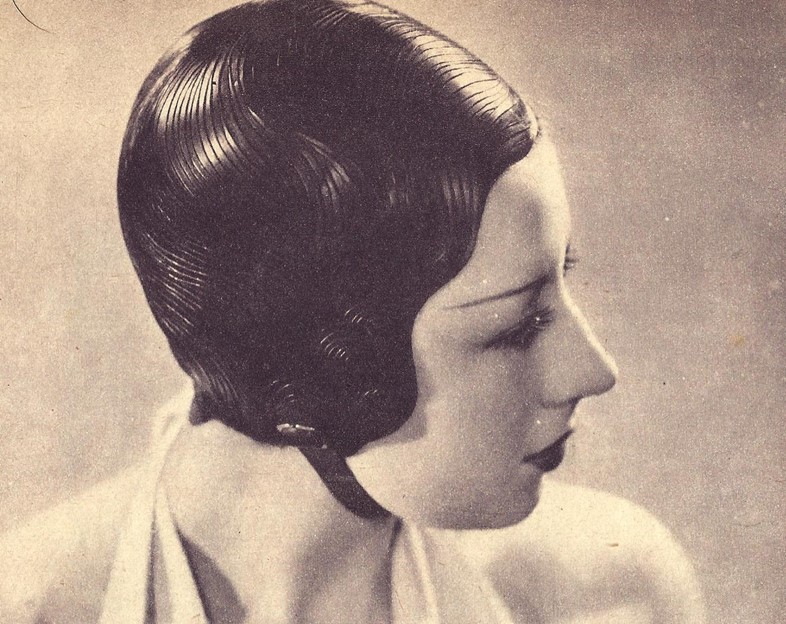
In high fashion, the shape of the swimming hat has been utilised stylistically to create curious proportions, streamlining the upper body and providing any ensemble with an otherworldly ambiance. Its necessity as an accessory is certainly left to personal discretion, unlikely to ever fulfill the same role as the elegance of a glove or waist-cinching qualities of a belt. However, for Miu Miu S/S17 (a show simultaneously full of joyful beachy aesthetics and gloomy environmental contemplations, celebrating “summer with all its pleasures and the scary idea of if we can have it again”) Miuccia’s women were decorated with swim cap-inspired headwear – and not for the first time. As the adage goes: if it’s good enough for Mrs Prada, it’s certainly good enough for us.
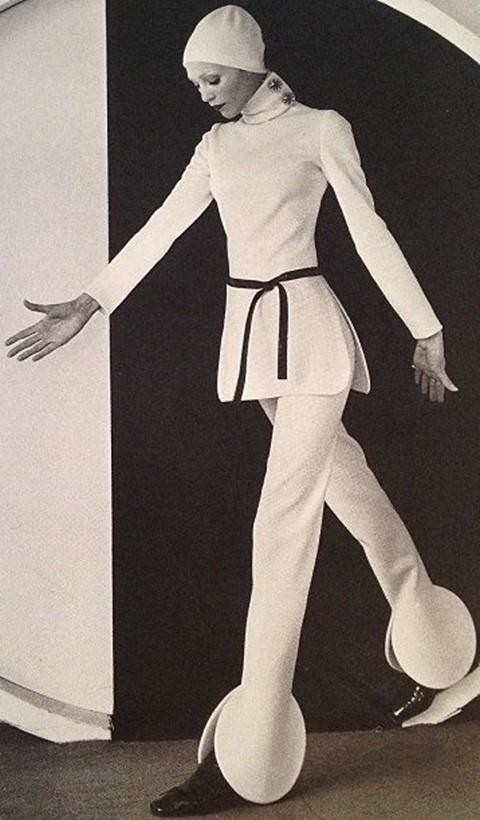
The Atomic Age
In the 1960s, the cold war quietly raged and paranoia over the threat of nuclear warfare palpably dominated western society. The moon landing soon followed, and suddenly the notion of a life lived in outer space seemed to surpass the realm of fiction. Enter the sartorial trio of Pierre Cardin, Paco Rabanne and André Courrèges, who collectively came to define space age fashion, tapping into the mood of the era. Vinyl, goggles, go-go boots and chainmail all featured heavily in their respective designs, each creating a signature interpretation of the atomic age; but notably, the silhouette of the swimming cap was used as a stimulus by all, unmistakably referencing the protective nature of a helmet.
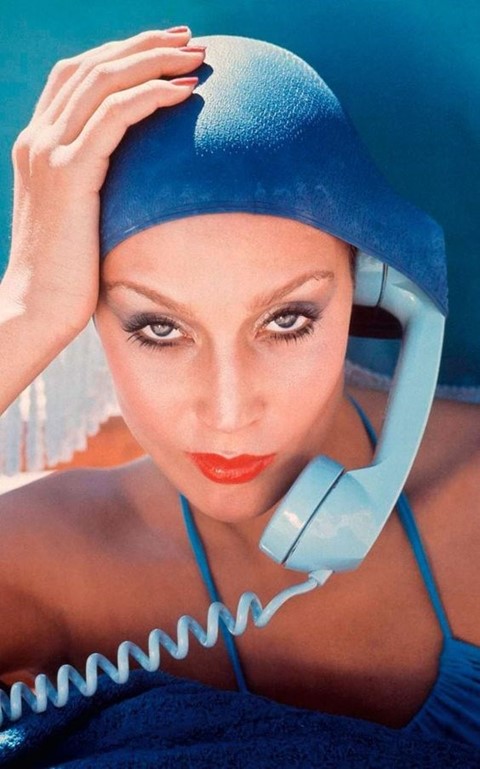
Jerry Hall and Norman Parkinson
Arguably one of Norman Parkinson’s most enduring images is his portrait of Jerry Hall shot in Montego Bay, Jamaica in 1975, marking her first ever appearance on the cover of British Vogue. With sartorial decision-making courtesy of Grace Coddington, the cover features a wry-looking Hall wearing an azure blue bathing cap by Britmarine; the receiver of a turquoise telephone humorously held to her ear by the elasticity of latex. It was the beginning of a year-long love affair between Jerry, Norman and the swimming hat; as the supermodel was also photographed in one posing as though about to dive from a Styrofoam plinth – in red Manolo Blahnik sandals, swimsuit and cap to match – in Russia, January 1976.
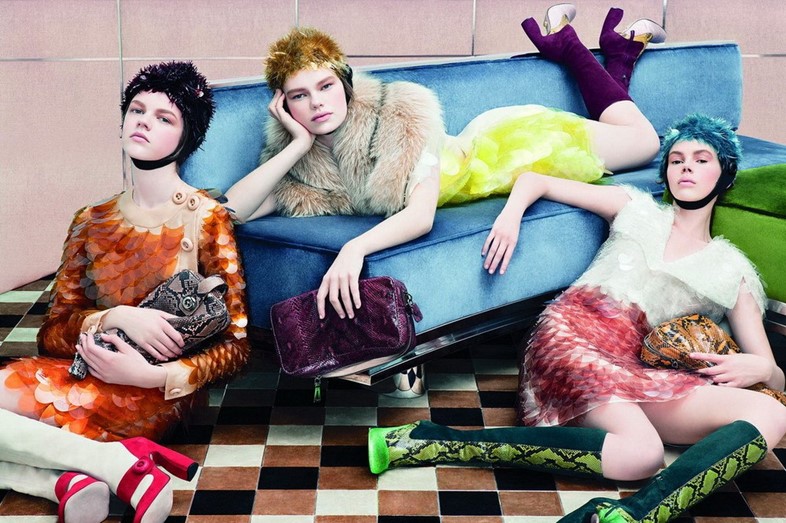
A Cacophony of Prada
Miuccia Prada is the undisputed maestra of crafting an elegance that defies logic. Her wondrous ability to transform an assemblage of stylistic components possessing potential for repulsion into the most covetable and recognisable fashion around is a skill that few others will ever acquire. For the Prada A/W11 show, Miuccia mused: “I was looking at the obsessions women have with things like python, fur, and paillettes, trying to see how sexy materials can look different”; her experimentation with said materials were deftly executed through a strong reference to the aforementioned atomic silhouettes of the 1960s. In the campaign shot by Steven Meisel, models lay draped across chintzy velour sofas clad in a cacophony of textures – faux fur, snakeskin and oversized sequins resembling fish scales, to be precise – with the heels on boots unnaturally bulbous. The pinnacle of eccentricity however, is the headwear: fuzzy, chinstrap caps inspired by the aviator style-swimming hat.
